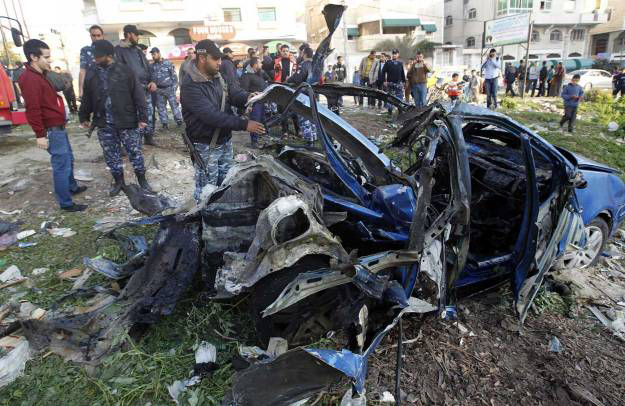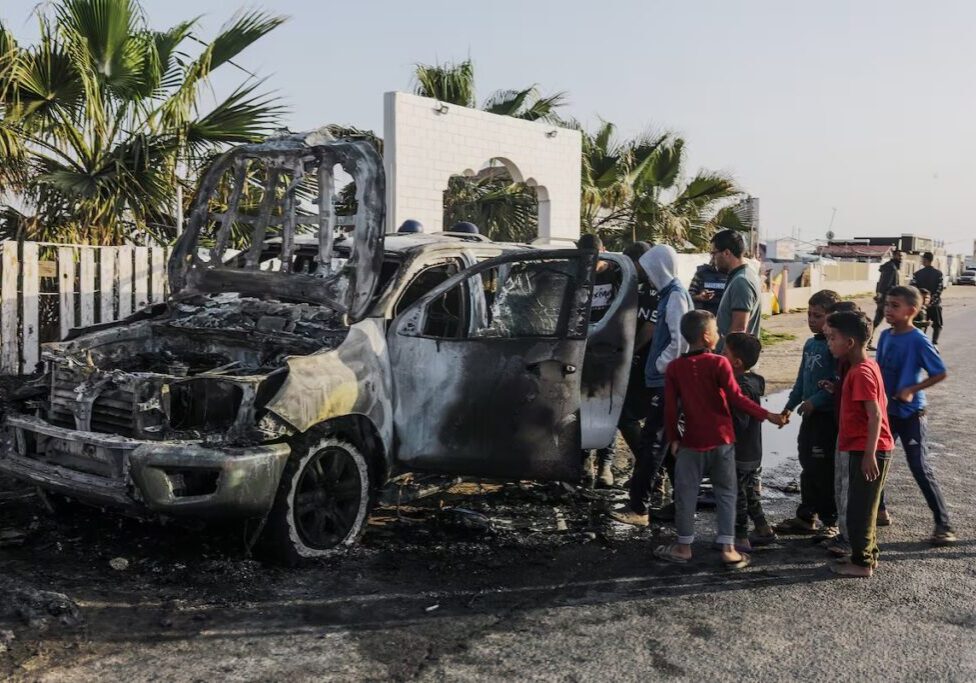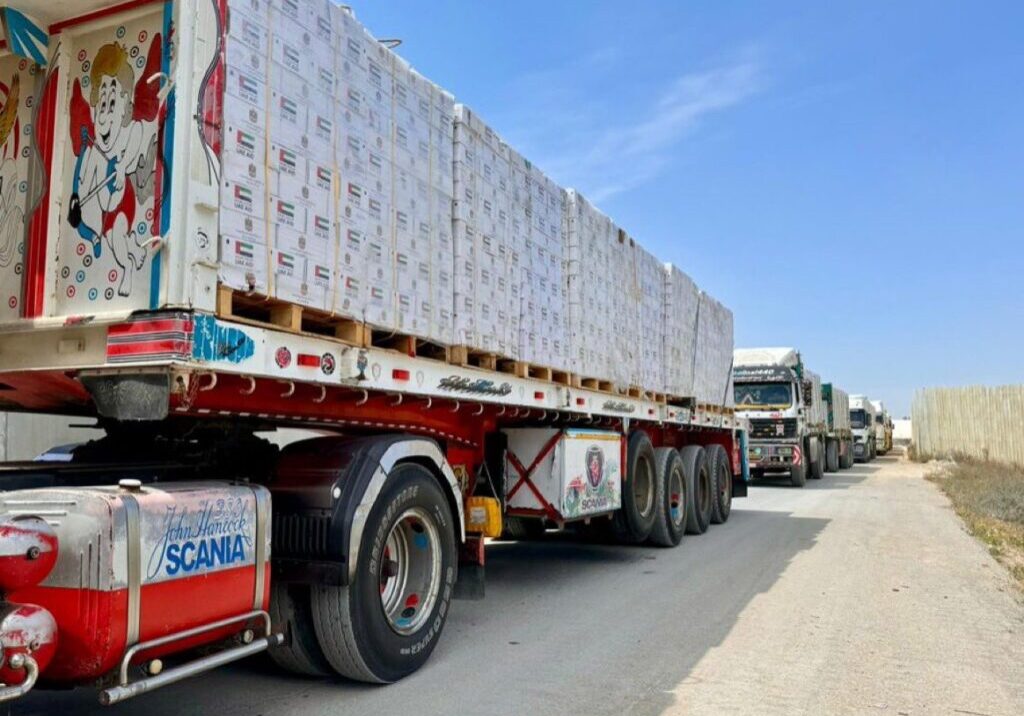Australia/Israel Review
Southern Exposure
Mar 27, 2012 | Amotz Asa-El

After a week of intermittent barrages of mortars, rockets, and missiles, relative quiet befell southwestern Israel, in bizarre synchrony with a blessed winter’s belated departure.
The weather has been one happy story in Israel this year. After seven years of drought, the skies opened up and by early March, the Water Authority reported that overall rainfall for this year had already exceeded by more than 10% the annual average.
Consequently, waterfalls up north are gushing, the Jordan is feeding Lake Kinneret (the Sea of Galilee) with a powerful flow seemingly long-forgotten, and down south, blush anemones have painted entire hillsides red.
Unfortunately, in mid-March, the meteorological idyll was disrupted by ballistic flurries that receded to background level only after several long days of military duels, technological pizzazz, and political chess.
On the military plane, the chronology began on Friday March 9, with the targeted killing in Gaza of Popular Resistance Committees head Zuhair al-Kaissi. The IDF said the 39-year-old Islamist was about to launch a major terror attack on Israel near the Red Sea, of the sort that had been waged in August, with his involvement. Back then, what began with automatic gunfire on a bus travelling south along the Egyptian border was followed by successive missile attacks on passing civilian vehicles ultimately killing seven Israelis, including two sisters and their husbands. Soon after al-Kaissi’s death, missiles began raining on Israel from the Gaza strip.
When it was over, more than 300 missiles had been lobbed at Israel’s southwestern hip, from Beersheva in the east to Ashkelon in the west, and from Netivot in the south to Ashdod and Gan Yavne in the north, about half-an-hour south of Tel Aviv. The barrages tested several civilian and military systems, and the results, compared with previous bouts, were encouraging for Israel.
Avoiding the relative disorder of 2006, when local governments were caught unprepared in the face of missile attacks from Lebanon, this time mayors were empowered to assess their localities’ situation based on the Homefront Command’s reports. Consequently, schools were shut for a week in all the targeted areas beyond the Gaza Strip’s immediate outskirts, while bomb shelters were clean, equipped, and accessible, accommodating reasonably well a million civilians who had come under fire.
At the same time, Israeli houses, schools and kindergartens within roughly five kilometres of the Gaza Strip had been fully fortified in recent years, a gradual project that is still being completed. Paradoxically, life in Israeli communities from which Gaza’s skyline is visible was disrupted much less than in cities dozens of kilometres away.
Yet the big surprise of the bout was in the technological sphere. Iron Dome, the Israeli-developed anti-missile system, intercepted some 85% of the missiles fired on Israel and heading for built-up areas of the country. Few in Israel were hurt even after four days of intensive fire. The computerised system, invented by state-owned defence-systems developer Rafael, automatically detects short-range missiles in their flight, homes in on them and destroys them in mid-air.
Iron Dome’s success, which has been attributed to improvements made in the wake of its initial battle tests last year, has been more than military. Southern residents’ ability to see, with their own eyes, enemy missiles fended off above their heads helped boost morale. Now the IDF’s three batteries are expected to be joined shortly by a fourth, and by next year there will be seven, as the system’s efficiency has been demonstrated beyond dispute.
Then again, Israel’s response to the fire from Gaza was not limited to defence. Air attacks on missile squads, launching pads and warehouses killed more than 20 armed members of Islamic Jihad (and also killed four civilians) and rendered their effort to harass and humiliate Israel a failure.
Politically, while the guns fired, most politicians, including in the Opposition, backed Prime Minister Binyamin Netanyahu and Defence Minister Ehud Barak. The two oversaw the action without once convening the Security Cabinet. Netanyahu occasionally updated several senior ministers, but he didn’t gather even his innermost forum of eight senior ministers.
The reason was that from an Israeli viewpoint there was little to debate in the face of the situation, which had in general been accurately predicted and well controlled by the General Staff. What remained unpredictable was Gaza’s place within the broader context of a continuously boiling Middle East.
The reason for the timing of al-Kaissi’s effort to organise a grand attack, and the inspiration for Islamic Jihad’s missile attacks, was all too clear: Teheran. The Iranian regime’s ties to these circles are well known, and its interest in causing the kind of mayhem the IDF managed to pre-empt is obvious. Violence on Israel’s borders would at least momentarily divert attention from the diplomatic siege on the Islamic Republic, and from the civil war that has come to grip Teheran’s only Arab state ally, Syrian President Bashar Assad.
What is less clear is the relationship between Hamas and Islamic Jihad, and where, if anywhere, Hamas takes its own orders these days. Until the Syrian civil war, Hamas was at least inspired, if not micromanaged, from Damascus, through its representative there, Political Committee head and de facto international leader Khaled Meshaal. In January, however, Meshaal abandoned Damascus in a move that angered Assad, whose aides said Hamas was ungrateful for Syria’s hospitality to Hamas’ leaders over many years.
Lurking behind the move was Meshaal’s assessment that Hamas could not afford to be on the wrong side of an emerging Middle East, where Syria’s ruling Alawite minority and its Iranian backers are anathema to all Sunni Arabs. Hamas’ Prime Minister Ismail Haniyeh has defied Meshaal by maintaining good ties with Teheran and visiting there in February. The Islamic Jihad appears unconcerned about allowing itself to be inspired by and associated with Iran and its allies, and its undisputed leader, Ramadan Shalah, still operates from Damascus.
Yet, when the fire on Gaza intensified in mid-March, Hamas happily followed Egyptian intelligence’s lead into a ceasefire brokered with Israeli Defence Ministry official Maj.-Gen. (res.) Amos Gilad. When it was over, Iran’s thinly veiled attempt to stir a distracting storm away from its own shores seemed to have failed. As of the last days of winter 2012, Egypt’s role as a counterbalance to Iran and Gaza’s adult supervisor seemed to have somehow passed on from the Mubarak era to its military and Islamic heirs.
Then again, in today’s Middle East no such circumstance can be assumed durable. Suffice it to say that the Egyptian intelligence officers who mediated between Israel and Gaza might all vanish following Egypt’s presidential election in late May, when the year’s bountiful winter gives way to summer’s heat, haze, humidity, mirages – and shifting sands.
Tags: Israel






